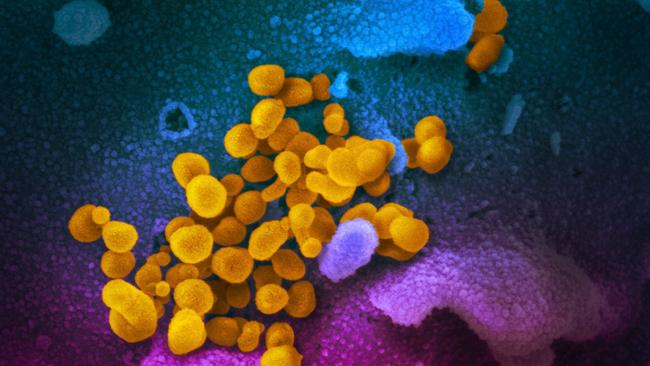Coronavirus ‘attacks a range of organs’
Seven months after the emergence of the novel coronavirus in Wuhan, it’s become clear that it is much more than a respiratory virus.

Seven months after the emergence of the novel coronavirus in Wuhan, it’s become clear that COVID-19 is much more than a respiratory virus.
In serious cases, SARS-CoV-2 causes damage to the lung, which may be irreparable. Yet its impacts go beyond the lungs for some — blood vessels through the entire body can be affected, as well as the heart, the kidneys and the brain.
“This is a systemic virus,” said Ian Mackay, a virologist from the University of Queensland.
“It starts off in the respiratory tract but it then moves through the circulatory system and attacks a whole range of different organs — the kidneys, the heart, the cells that line our blood vessels.
“The receptor for this virus is widespread on different tissues. It does look like it can have an impact on all sorts of tissues, including the central nervous system.
“And for people who are really ill, you can have this thing called ICU delirium, when cases that are on ventilators for a long time can have problems with muscle wastage and issues related to cognitive function, and we don’t know how long that’s going to last.”
When infectious particles are inhaled or enter through the mouth, the virus embeds itself in the lining of the nose. If the immune system does not block the virus at this level, the infection spreads down the windpipe to attack the lungs, where an inflammatory response is triggered.
The immune system’s front-line white blood cells release inflammatory molecules called chemokines, resulting in the production of more immune cells; fluid and pus accumulates in the lungs, causing coughing, fever, shallow respiration and pneumonia. The sickest patients need to be placed on ventilators.
Some patients can progress to develop a serious condition called acute respiratory distress syndrome, where the lungs’ alveoli become stuffed with fluid, white blood cells, mucus and destroyed lung cells.
The systemic effects of the virus in some extend to the heart and blood vessels. The infection can result in blood clots, heart attacks and cardiac inflammation.
The virus can also infect the lower gastrointestinal tract, sometimes resulting in diarrhoea.
Kidney damage is common in the sickest patients, when the virus either attacks the kidneys directly, or plummeting blood pressure leads to kidney failure.
The virus can also directly invade the central nervous system. Strokes, seizures, and viral encephalitis have all been reported.
The World Health Organisation has now acknowledged what many scientists suspected — the virus may be transmitted via airborne particles. Short-range aerosol transmission, particularly in specific indoor locations such as crowded, inadequately ventilated spaces, is possible.
The most common mode of infection, however, remains large respiratory droplets.




To join the conversation, please log in. Don't have an account? Register
Join the conversation, you are commenting as Logout